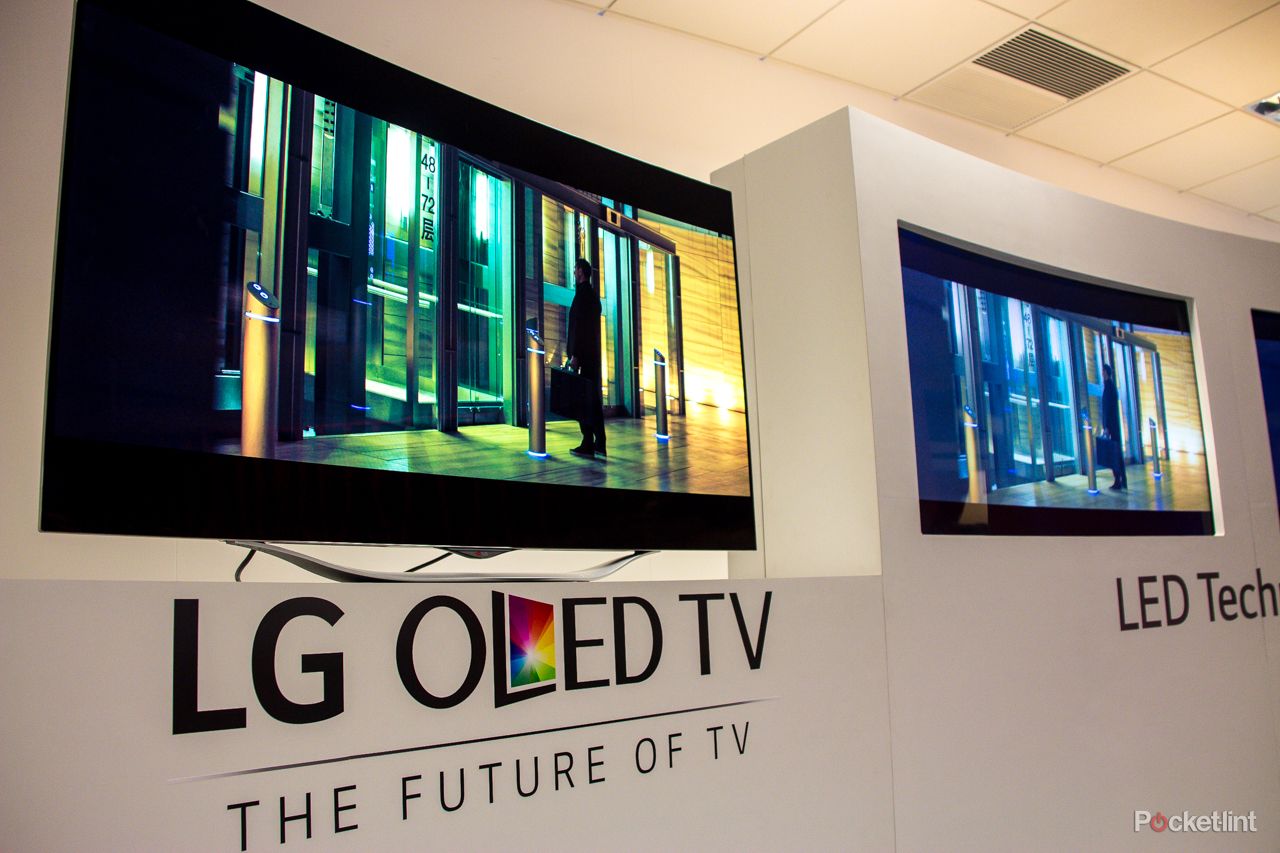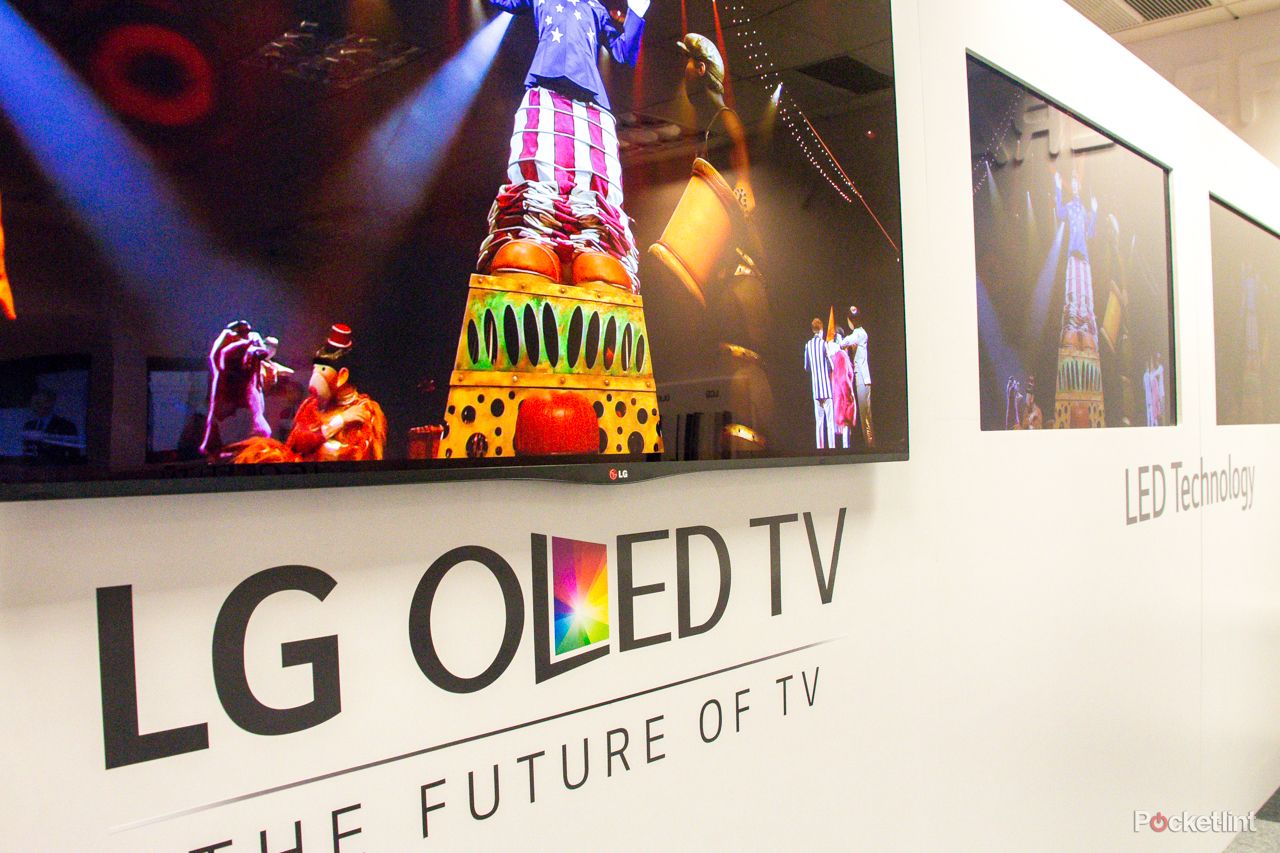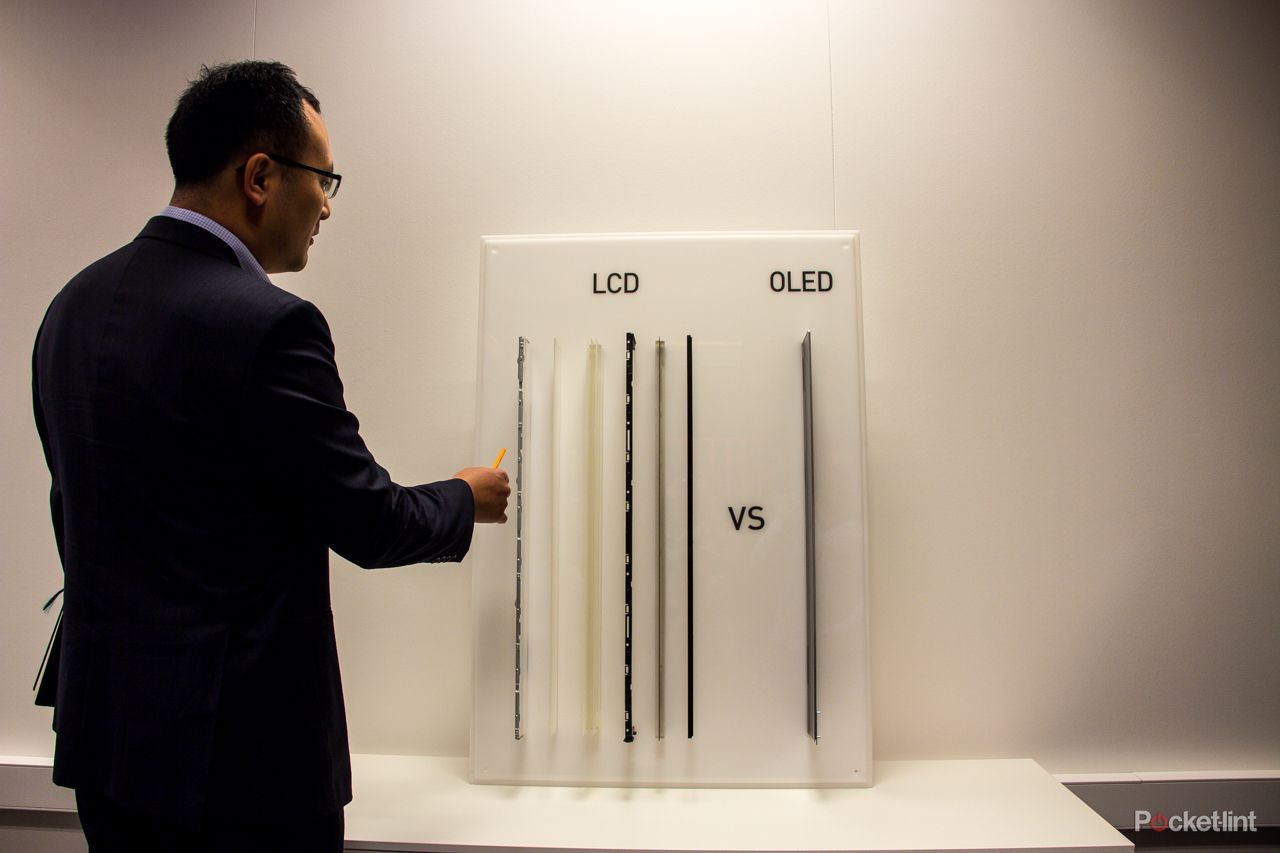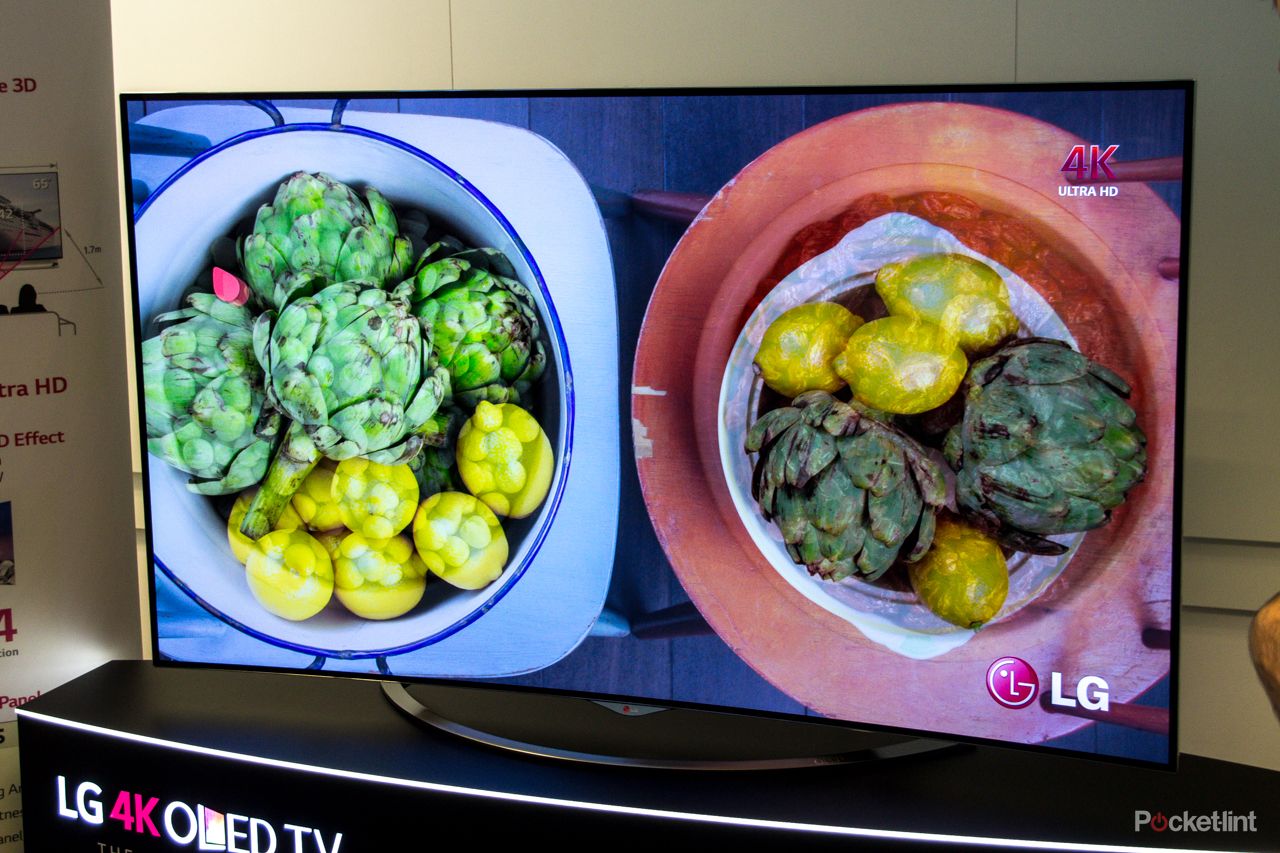Although LG will remain strongly behind the LED TV market, making sets at all sizes using LCD display technology and LED backlighting, it is ramping up its OLED production dramatically as it believes the panel tech is the future of flat screens. And considering our experiences with OLED TVs, both those that are currently available and the ones we saw at IFA that are yet to come, we find it hard to disagree.
OLED TV technology is impressive for a number of reasons and outperforms LED equivalent sets in most picture quality categories, it is currently expensive, yes, but the benefits are worth that extra expense we feel, especially if you want to remain futureproofed.
We visited LG's British HQ to look at several instances of its OLED TVs running the same content as (unknown) rival LED sets side-by-side and came to the following conclusions. LG isn't the only brand investing heavily into OLED technology at present and we have seen several TVs from other manufacturers that we've been equally impressed by, but this test alone was enough to give us a decent idea.
Black levels
OLED TVs have an unparalleled ability to reproduce blacks that look as if the TV is off, yet other areas on the screen are just as vibrant and bright as they should be. With no back light, there is no light bleeding through the pixel groups when they are not used, hence the deep black levels.
This is an area that many plasma TV fans have been crowing about for years, but it can be argued that OLED technology is even better with maintaining dark, even zones in a picture.
Wider colour gamut
OLED offers a wider colour gamut than LED, rendering colours more accurately and vibrantly. This, says LG, is partly thanks to the fact that LCD pixels suffer from light leakage and, like with the black levels, the end result is washed out colours. That's not to say LED TVs are bad at rendering colours, far from it. When viewed on their own, you wouldn't even notice and many televisions look fantastic, with bright, saturated colours. However, when viewed alongside an OLED TV you can see a marked difference in colour accuracy.
LG also adopts a WRGB pixel system, adding an additional white pixel in a cluster to ensure that colour reproduction is more accurate.
Contrast
Visually, the contrast levels look staggeringly good - not least thanks to the superbly deep blacks. In tech terms we were told that OLED TVs have an infinite contrast ratio (as in impossible to calculate, rather than infinite, infinite), while LED TV manufacturers currently quote up to 5,000:1 for their sets (including LG, it must be said).
Refresh rate
OLED really scores highly over LCD with or without LED backlighting when it comes to refresh rate. An OLED panel is capable of a refresh rate of 0.001ms, up to a thousand times faster than LCD is capable.
This results in smoother on-screen action with less judder and picture ghosting. There could still be artefacts due to the picture processing engine, but the refresh rate is not to fault.
Wide viewing angles
Again, attributable to light leakage, LED TVs can't match OLED for viewing angles. When viewed from an extreme angle - over 100-degrees to the side of the set - you will be able to see colour fading in areas on an LED set, but an OLED TV can be viewed at around 160-degrees without any degradation in the picture.
Superthin
LED TVs are built from many layers, including the backlight unit, which often has four sheets inside at least, and the liquid crystal strata itself, while OLED has far fewer. LG's OLED TVs are made of five sheets; the encapsulation layer for sturdiness, the OLED layer, a colour refiner on TFT, a thin glass sheet and a final anti-reflective sheet on the front. This allows the entire TV to be 4.3mm. Modern LED TVs are around three times thicker than that by default.
Also, because all layers bar the rear metal and glass are flexible, it allows for the TV to be curved easily.
Best for curved TV
That leads up onto the next reason, although at present this is more a personal choice. LG is focusing its entire OLED production plans on curved TVs. It believes that the premium end of the market prefers curved TVs over traditional flat models so while it hasn't discounted making flat OLED sets in future, it won't be initially (beyond the TVs already available).
The technology is best suited for curved TV, it says, being that it can be bent easily and housed between a curved metal ecapsulation layer and curved glass, both of which simple to manufacture.
LED TVs are harder to curve thanks to the number of layers needed to be formed into the required bend. One caveat to this is that it is harder to maintain a constant and even backlight, with some zones appearing brighter across the width of the TV.
This might not be noticeable in some curved LED TVs, but the two we saw (brand hidden) definitely had an issue. The OLED TV did not.
3D
Perhaps more relevant to LG's 3D OLED panels than some competitors, and possibly as applicable to the brand's LED TVs, but we've always been bigger fans of passive 3D than active and the company is continuing that trend with its OLED tellies.
Passive 3D means that the glasses are not powered or shuttered. This makes them far cheaper to manufacture and sell than active 3D glasses, and screen images are flicker free with better cross-talk (where the two separate images that make an object 3D overlap more accurately). A side effect is that you get a drop in resolution, as only active 3D can offer Full HD representation, but we've found that to be negligible in test and not compensation enough for the other features.
4K
LG has finally cracked one of the major critical responses to OLED as a TV technology and is able to build 4K Ultra HD OLED sets. To begin with they will only be available in 65- and 77-inch screen sizes and, for many, prohibitively expensive, but it's a start and proof that it is, indeed, possible.
Lifespan
One worry about OLED as a TV display technology has been its more rapid rate at which it degrades. As each pixel provides its own light source, brightness was found to fade in the past and previously at too fast a rate to make it a good TV solution.
It was okay in mobile devices, that have far less lifespans, but a TV needs to last for considerably longer, normally as the centrepiece to a home.
LG and other manufacturers have since cracked it. It says that its OLED TVs now have a lifespan in normal viewing conditions of 30,000 before deterioration in brightness. That's around 10 years if you watch a bit more than around eight hours of TV a day, every day. And that's not in eco mode.
Screen burn was also a concern but LG has an algorithm that washes the screen each time it is put into standby mode, which is designed specifically to prevent just that.
Price
Another of the biggest marks against OLED as a viable TV technology has always been price, and currently the cost of manufacture, when added to research and development costs, puts an OLED TV in the super premium category. It is not particularly affordable when compared to an equivalent LED set.
In fact, considering a 55-inch 1080p LG OLED TV is around the £3,000, there's a good argument to be had that you should plump for a 4K LED set instead. However, LG is about to ramp up production of its OLED panels, as are several other major manufacturers, and with more panels coming off the production line, prices will invariably drop.
Yield too is important. The yield is basically how many usable panels are build in comparison to those with manufacturing flaws, and the yield for OLED displays doesn't quite match that for LED at present. That is improving all the time though, especially at 55-inches, so will also drive down prices.
What might cost £3,000 now, therefore, could be £2,000 or less this time next year. Maybe even sooner. It is unlikely the 4K sets will be much cheaper in the coming year, and LG's highest end bendy TVs will be for the more exclusive customer for sure, but at least you know that if you invest that little bit more, your new TV will be fully futureproofed.




